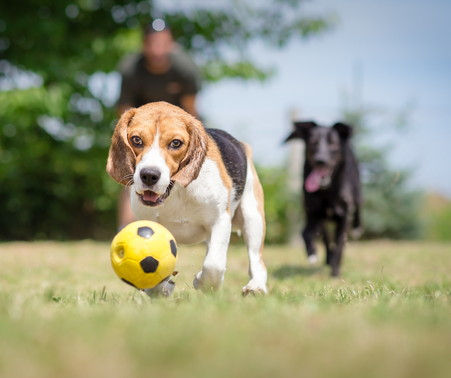|
Bringing a new puppy into your life is an exciting adventure filled with joy and boundless energy. While you enjoy watching your pup explore the world with eagerness, it's essential to maintain a balance between letting them be active and ensuring their physical development progresses in the right direction. A common concern that new puppy owners have is 'How much exercise should my pup get?' The response is not as straightforward as you may think. There are some generic 'rules' still circulating out there, such as '5 minutes of exercise for each month of age,' which fails to consider the type of workout, the breed characteristics of the dog, their behavior and health, and of course, the adjustment of exercise as you go. Understanding Puppy Development Puppies undergo rapid growth during their early months, with their bones, muscles, and joints developing at an astonishing pace. While exercise is vital for their overall health, it's important to be mindful of the types and amounts of activities you introduce, as excessive or inappropriate exercise can lead to serious musculoskeletal issues. The Importance of Controlled Exercise It's important to note that puppies are not miniature adults. Their growing bodies are more susceptible to injuries caused by excessive stress. Overexertion, repetitive high-impact activities, or vigorous play can harm their developing joints and lead to problems like growth plate injuries and joint dysplasia. To ensure your puppy's healthy growth, here are some guidelines to consider: 1. Age Matters:
Puppies under 3 months have delicate skeletal structures. They require short bursts of gentle play and supervised exploration rather than strenuous exercise. 2. Avoid Forced Exercise: Personally, I recommend that puppies should not engage in high-impact jumping or chasing activities like repetitively chasing a ball until their growth plates are fully developed. For toy and miniature breeds, growth plates can close between 6-8 months of age and for giant and large breeds; 14-16 months of age. Even then I still believe that there are other, more beneficial forms of exercise to do than repetitively throwing a ball which can lead to microtrauma to muscles and cartilage, 3. Low-Impact Activities: Opt for activities that promote balance, coordination, and controlled movement, such as slow leash walks or interactive play. Even off-leash time at the park with other dogs to wander and wrestle is advised over chasing a ball repetitively. Seeking Expert Advice As a loving and responsible puppy owner, you want what's best for your four-legged companion. When it comes to managing your puppy's exercise routine, seeking professional advice can make all the difference: 1. Consult a Veterinarian: Schedule a visit for a comprehensive health check and to discuss your puppy's exercise needs based on their breed, size, and overall health. 2. Engage a Canine Physiotherapist: A certified canine physiotherapist can assess your puppy's individual needs, offer tailored exercise plans, and provide guidance on promoting balanced growth. 3. Breed-Specific Considerations: Different breeds have varying exercise requirements. Research your puppy's breed characteristics and consult experts familiar with those breeds. 4. Monitor Behaviour and Health: Pay attention to signs of fatigue, limping, or reluctance to exercise. These could indicate that your puppy has had enough activity for the day. 5. Adjust Exercise as Needed: Be flexible in adjusting the exercise routine based on your puppy's energy levels, growth progress, and any recommendations from experts. Your puppy's journey to adulthood is an exciting chapter that requires careful guidance and nurturing. Striking the right balance between allowing them to explore their world and protecting their developing bodies is key. By understanding the importance of controlled exercise, seeking professional advice, and prioritising your puppy's well-being, you're setting the stage for a lifetime of happiness, health, and vitality. Remember, a healthy and balanced approach to exercise today can lead to a stronger, happier, and more resilient canine companion tomorrow. |
AuthorJoanna Whitehead Archives
June 2024
Categories
All
|


 RSS Feed
RSS Feed
